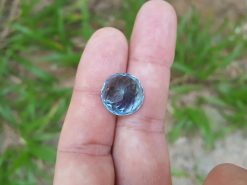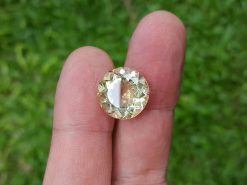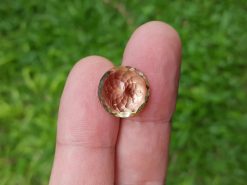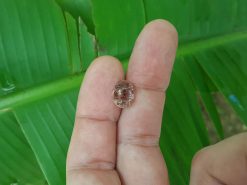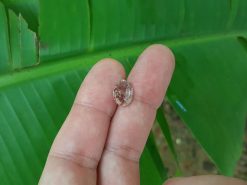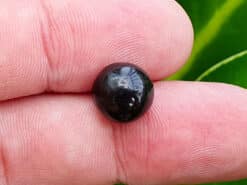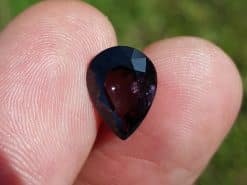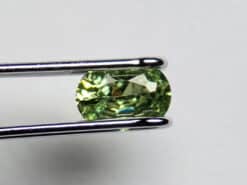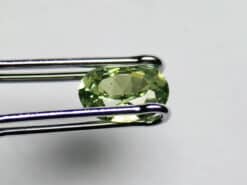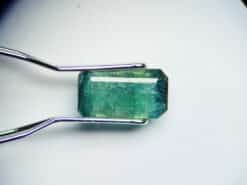What are the different types of gemstones?
Introduction to the different types of gemstones
Welcome to the enchanting world of gemstones! As a lover of these beautiful and diverse natural wonders, I am thrilled to share my knowledge and passion with you in this comprehensive guide. We will explore the various types of gemstones, their classifications, grading systems, and more. From the popular, well-known gemstones to the lesser-known varieties, we will dive into the factors that influence their value, rarity, and the treatments and enhancements that can enhance their beauty. Finally, we will discuss tips for buying and collecting these precious stones and the future of gemstone mining and sustainability. So, let’s embark on this sparkling journey together!

Classifying Gemstones: Precious and Semi-Precious Stones
Gemstones have been classified into two main categories: precious and semi-precious stones. The precious stones category consists of diamonds, rubies, sapphires, and emeralds. These gemstones are highly valued for their rarity, beauty, and durability. They have been used in jewelry for centuries and are often associated with royalty and luxury.
Semi-precious stones, on the other hand, encompass a wide range of gemstone types that are more abundant and generally less valuable than their precious counterparts. This category includes gems such as amethyst, citrine, garnet, topaz, and many more. It is important to note that the distinction between precious and semi-precious stones is not based on any specific scientific criteria or gemstone grading system. Instead, it is a reflection of historical and cultural factors that have contributed to the perceived value and desirability of certain gemstones.
Recent years have seen a shift in the gemstone industry, with many professionals and enthusiasts now preferring to use the term “colored gemstones” instead of “semi-precious stones.” This change aims to challenge the outdated notion that these stones are somehow inferior to precious stones and highlight the beauty, rarity, and value that many colored gemstones possess.
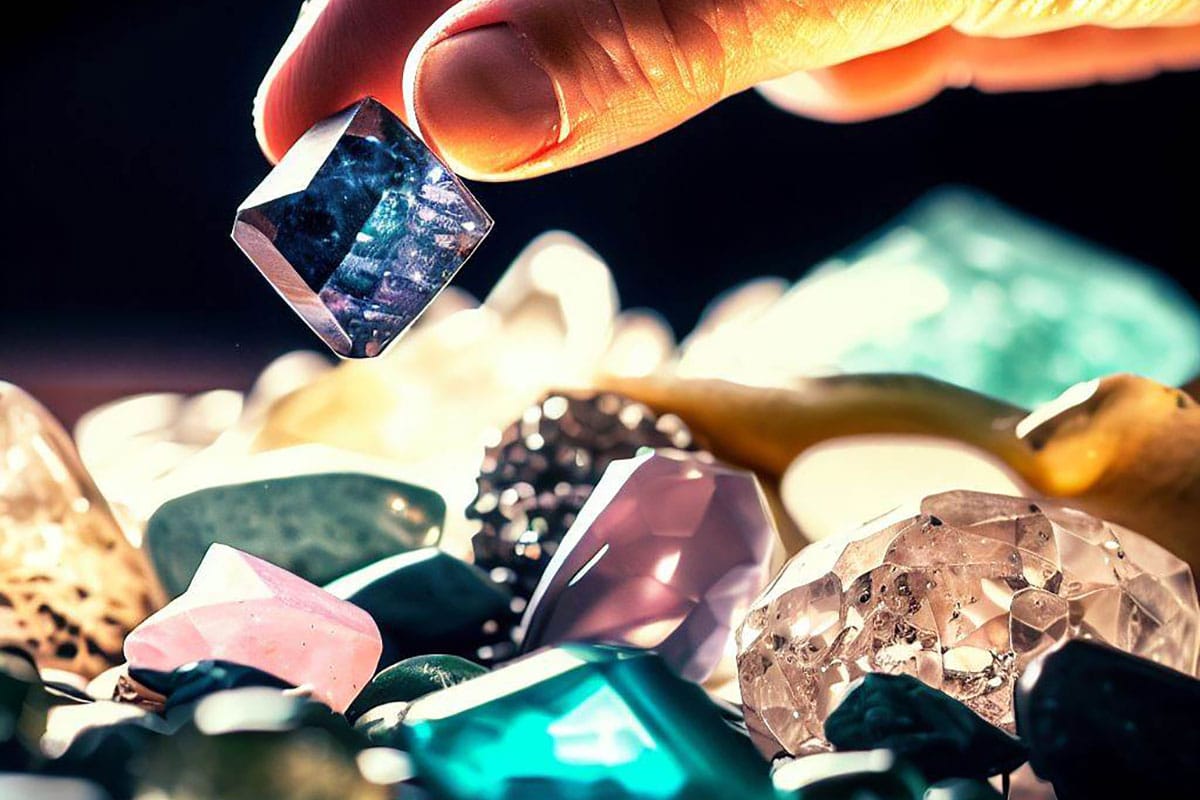
Understanding Gemstone Grading Systems and Quality Charts
When it comes to evaluating gemstones, there is no universal gemstone grading system or quality chart that applies to all types of gems. Instead, each gemstone variety has its grading criteria based on the unique characteristics that define its beauty and value. The most widely recognized gemstone grading scale is the one used for diamonds, known as the 4Cs: carat weight, cut, color, and clarity.
For colored gemstones, the grading criteria may vary depending on the gem variety, but generally, the factors considered include color, clarity, cut, and carat weight. Some gemstone grading systems also take into account additional factors such as the gem’s rarity, origin, and treatments. It is important to be familiar with the specific grading criteria for the gemstone you are interested in to ensure that you are making an informed decision when buying or collecting different gemstone varieties.
To help gemstone enthusiasts navigate the complex world of gemstone grading, organizations like the Gemological Institute of America (GIA) and the American Gem Society (AGS) have developed comprehensive gemstone grading systems and education programs. These organizations offer courses, resources, and certifications to help both professionals and consumers better understand the nuances of gemstone evaluation and make informed decisions when buying or selling gemstones.
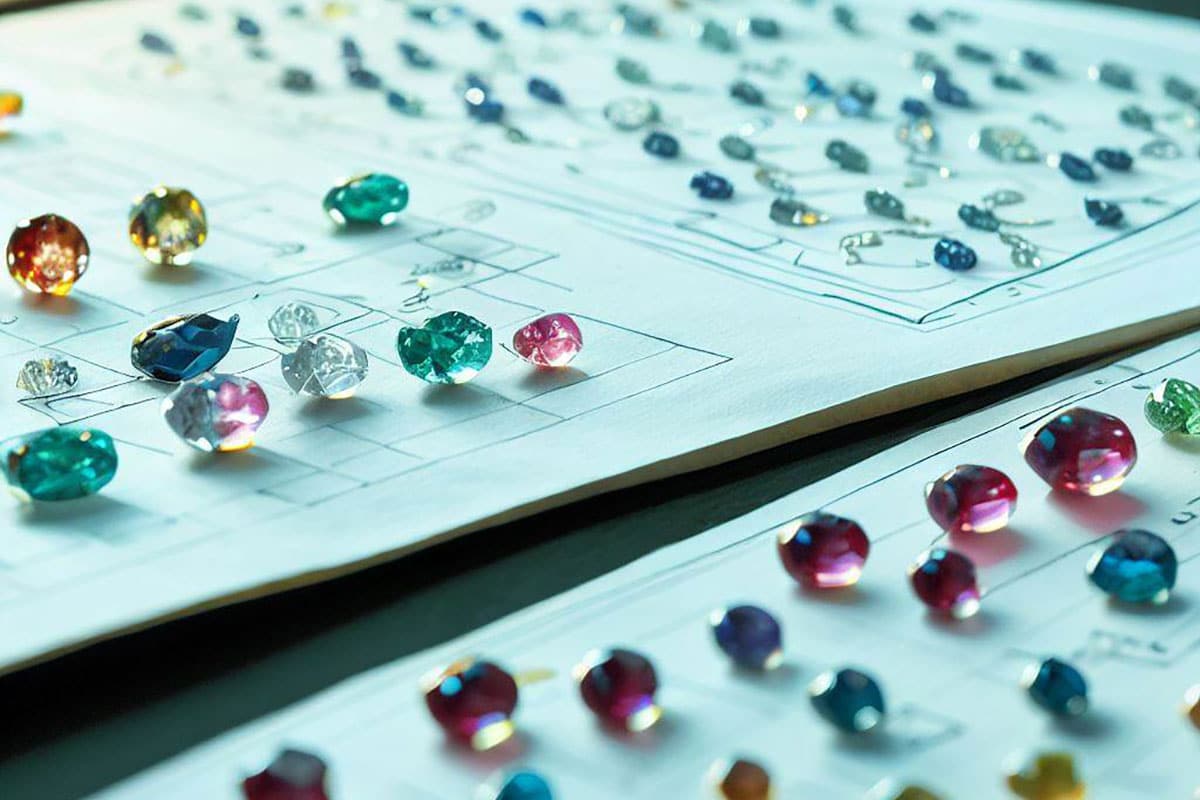
Gemstone Color Grading and Its Importance
Color is arguably the most important factor when evaluating colored gemstones. It can significantly impact a gem’s beauty, rarity, and value. In order to assess and communicate the color of a gemstone, gemologists use a gemstone color grading chart that typically includes three key components: hue, tone, and saturation.
Hue refers to the basic color of the gemstone, such as red, blue, or green. Tone describes the lightness or darkness of the hue, ranging from very light to very dark. Saturation, also known as color purity or intensity, refers to how vivid or strong the hue appears, from dull or washed-out to vivid or intense.
Many gemstone varieties are valued for their specific color characteristics. For instance, the ideal color for an emerald is a vivid, intense green with a balanced tone, while the most prized rubies exhibit a deep, saturated red hue known as “pigeon’s blood.” By understanding the nuances of gemstone color grading, you can better appreciate the unique beauty of different gemstone varieties and make more informed decisions when buying or collecting gemstones.
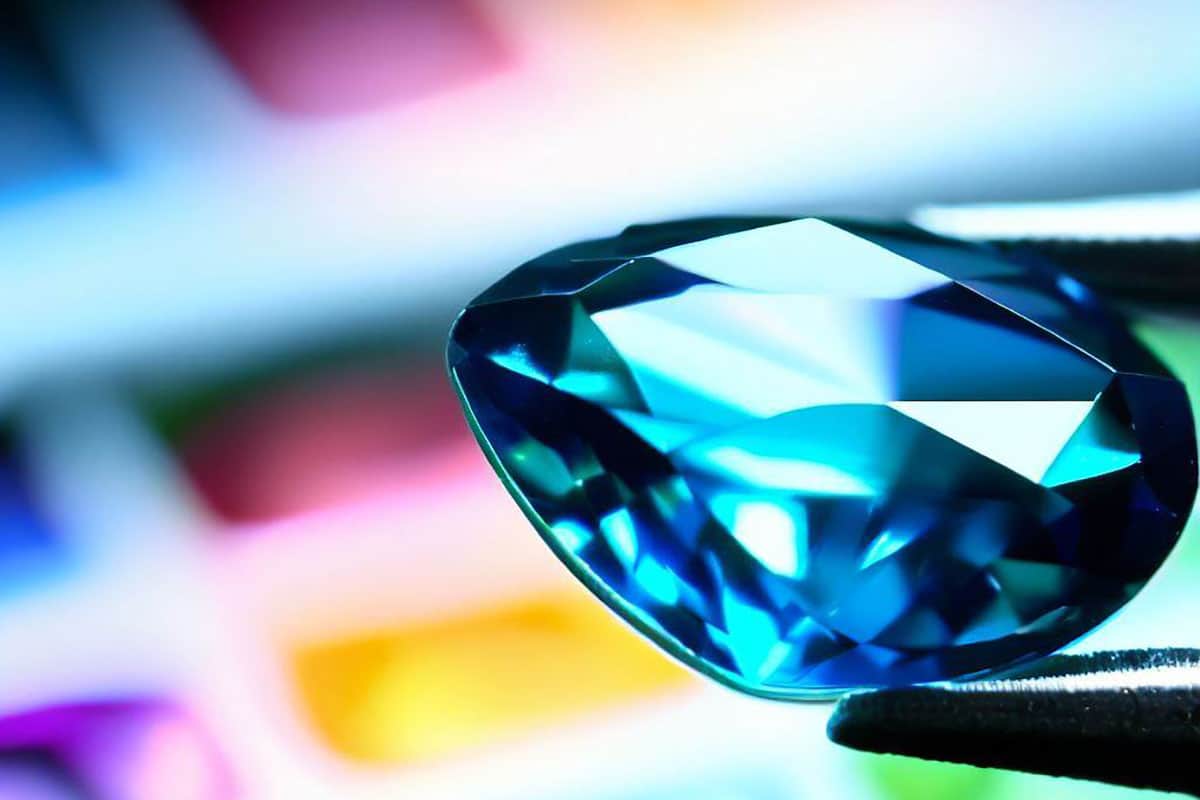
Popular Gemstone Varieties and Their Characteristics
There are countless gemstone types, each with its unique beauty and appeal. Some of the most popular gemstones include:
- Diamond: The hardest and most valuable of all gemstones, diamonds are prized for their incredible brilliance, fire, and scintillation. They are available in a range of colors, from colorless to fancy colored diamonds, including pink, blue, and yellow.
- Ruby: A variety of the mineral corundum, rubies are valued for their intense red hue, which can range from pinkish-red to deep, blood-red. Rubies are durable and make stunning pieces of jewelry.
- Sapphire: Also a variety of corundum, sapphires are known for their beautiful blue color, which can range from pale to deep, velvety blue. Sapphires are also available in other colors, such as pink, yellow, and green, and are known as “fancy sapphires.”
- Emerald: Part of the beryl mineral family, emeralds are famous for their vibrant green color, which can range from light to deep, rich green. Emeralds often contain inclusions, which are referred to as “jardin” (garden in French) and can add to their unique beauty.
- Amethyst: A variety of the mineral quartz, amethysts are known for their stunning purple color, which can range from pale lilac to deep, saturated purple. Amethysts are widely available and relatively affordable, making them a popular choice for jewelry.
- Citrine: Another variety of quartz, citrine is valued for its beautiful yellow to orange hues. Citrine is often more affordable than other gemstones and is a popular choice for those seeking a sunny, vibrant gemstone.
- Garnet: Garnets are a group of minerals that come in a wide range of colors, including red, orange, green, and purple. The most well-known garnet variety is the deep red almandine, but other varieties such as spessartine (orange) and tsavorite (green) are also highly sought after.
- Topaz: Topaz is available in various colors, including blue, yellow, orange, pink, and colorless. Blue topaz, in particular, is a popular choice for jewelry due to its affordability and beautiful sky-blue hue.
These are just a few examples of the vast array of gemstone varieties available. Each gemstone type has its unique characteristics, making them suitable for various styles of jewelry and personal preferences.
Lesser-Known Gemstone Types Worth Exploring
In addition to the popular gemstones mentioned above, there are many lesser-known gemstone types that are worth exploring for their unique beauty and rarity. Some examples include:
- Tanzanite: A relatively recent discovery, tanzanite is found only in Tanzania and is known for its unique violet-blue color. Tanzanite’s limited supply and stunning color make it a prized gemstone among collectors and enthusiasts.
- Morganite: A variety of beryl, morganite is known for its delicate pink to peach hues. Often referred to as “pink emerald,” morganite is becoming increasingly popular in fine jewelry, particularly in engagement rings.
- Tourmaline: Tourmaline is a group of minerals that come in a wide variety of colors, from pink and green to blue and even multicolored varieties like the stunning “watermelon” tourmaline. Each tourmaline variety has its unique beauty, making them a fascinating gemstone to explore.
- Alexandrite: A rare variety of the mineral chrysoberyl, alexandrite is famous for its color-change phenomenon, where the gem appears green in daylight and red under incandescent light. This unique property makes alexandrite an incredibly sought-after gemstone among collectors and enthusiasts.
- Moonstone: A variety of feldspar, moonstone is known for its unique adularescence, an optical phenomenon that creates a soft, ethereal glow reminiscent of moonlight. Moonstones can range from colorless to various shades of blue, peach, and even rainbow hues.
These lesser-known gemstone types offer a world of unique beauty and rarity for those looking to explore beyond the more well-known gemstone varieties.
Factors Influencing Gemstone Value and Rarity
Several factors can influence the value and rarity of gemstones. Some of the most important factors include:
- Color: As discussed earlier, color is a crucial factor in determining a gemstone’s value. Gems with exceptional color saturation and hue are generally more valuable and sought after.
- Clarity: Gemstones with fewer inclusions and blemishes are generally more valuable due to their increased beautyand rarity. However, some gemstones like emeralds are known for their inclusions, which are considered part of their unique beauty and character.
- Size and Carat Weight: Larger gemstones are generally rarer and more valuable than smaller ones, all other factors being equal. The carat weight of a gemstone is a measure of its size, with one carat being equal to 0.2 grams.
- Origin: The origin of a gemstone can significantly impact its value and rarity. For instance, Burmese rubies are highly sought after and valued due to their rich color and historical significance.
- Treatment and Enhancement: Many gemstones undergo treatments and enhancements to improve their color, clarity, or durability. While these treatments can enhance a gem’s beauty, they can also impact its value and rarity.
- Demand: Like any commodity, the demand for a particular gemstone can impact its value. For instance, the recent surge in popularity of colored gemstones like sapphires and rubies has led to an increase in their value.
Understanding these factors can help you make informed decisions when buying or collecting gemstones and ensure that you are paying a fair price for their beauty and rarity.
Gemstone Treatments and Enhancements
As mentioned earlier, many gemstones undergo treatments and enhancements to improve their color, clarity, or durability. Some common gemstone treatments include heating, irradiation, and diffusion.
Heating is one of the most common treatments for colored gemstones, as it can enhance their color and clarity. For instance, heating can turn a pale yellow citrine into a vibrant orange or a pale blue topaz into a deep, rich blue.
Irradiation is another treatment that can enhance a gemstone’s color. This process involves exposing the gemstone to radiation, which can alter its crystal structure and create new color centers. Irradiation is commonly used to enhance the color of diamonds, as well as some colored gemstones like blue topaz and yellow diamonds.
Diffusion is a treatment that involves applying a thin layer of color to the surface of a gemstone. This process can create vivid colors in gemstones that may not naturally occur, such as bright green or orange sapphires.
While these treatments can enhance a gemstone’s beauty, they can also impact its value and rarity. It is important to be aware of any treatments or enhancements that a gemstone has undergone and to factor this into your decision when buying or collecting gemstones.

Tips for Buying and Collecting Different Types of Gemstones
Buying and collecting gemstones can be a rewarding and exciting hobby, but it is essential to approach it with caution and knowledge. Here are some tips for buying and collecting different types of gemstones:
- Research: Before buying or collecting a particular gemstone, do your research and learn as much as you can about its characteristics, grading system, and value. This will help you make informed decisions and avoid scams or fraud.
- Buy from reputable sources: Only buy gemstones from reputable sources, such as certified gemstone dealers, to ensure that you are getting a genuine and high-quality gemstone.
- Inspect the gemstone: Look for any visible inclusions, blemishes, or treatments that may impact the gemstone’s value or beauty. Use a loupe or magnifying glass to inspect the gemstone in detail.
- Compare prices: Compare the prices of similar gemstones from different sources to ensure that you are getting a fair price for the gemstone.
- Invest in education: Consider investing in gemstone education programs or courses to deepen your knowledge and understanding of gemstones.
- Store gemstones properly: Proper storage can help preserve the beauty and value of your gemstones. Store them in a cool, dry place away from sunlight and other sources of heat or moisture.
By following these tips, you can make informed decisions when buying and collecting different types of gemstones and ensure that you are getting genuine and high-quality gemstones.

The Future of Gemstone Mining and Sustainability
As the demand for gemstones continues to grow, concerns have arisen about the environmental and social impact of gemstone mining. Mining can have devastating effects on local ecosystems and communities, and many gemstones are mined in developing countries with lax regulations and labor laws.
To address these concerns, many gemstone companies and organizations are working to promote sustainable and responsible mining practices. This includes initiatives to reduce the environmental impact of mining, improve labor conditions, and support local communities.
In addition to responsible mining practices, there is also a growing trend towards lab-grown gemstones, which are created in a laboratory using technologies that mimic the natural process of gemstone formation. Lab-grown gemstones are often more affordable and environmentally friendly than mined gemstones, making them an attractive alternative for those seeking sustainable and ethical gemstone options.

Conclusion
Gemstones offer a world of beauty, rarity, and fascination for those willing to explore their many varieties and characteristics. By understanding the different types of gemstones, their classification and grading systems, and the factors that impact their value and rarity, you can make informed decisions when buying or collecting gemstones.
Remember to always approach gemstone buying and collecting with caution and knowledge, and to prioritize sustainable and responsible practices. With these tips and insights, you can embark on a sparkling journey into the enchanting world of gemstones.
FAQ
What are the different types of gemstones and their characteristics?
Gemstones are exquisite natural minerals that come in a dazzling array of colors, textures, and properties. Here, we explore the fascinating world of different gemstone types and delve into their unique characteristics:
What are precious gemstones?
Precious gemstones are a highly coveted category known for their exceptional beauty and rarity. They include diamonds, which are prized for their unparalleled brilliance and hardness. Rubies, with their rich red color and remarkable durability, are also among the precious gemstones. Emeralds, displaying a captivating green hue, and sapphires, available in a range of colors but most famously associated with blue, complete the quartet of precious gemstones.
What are semi-precious gemstones?
Semi-precious gemstones encompass a vast and diverse group of gemstones that offer captivating beauty and a wide range of colors. Amethyst, with its regal purple tone, and citrine, radiating a warm golden hue, are popular semi-precious gemstones. Garnets, available in various colors, exhibit exceptional brilliance. These gemstones, along with others like peridot, aquamarine, and tourmaline, offer affordable yet stunning options for jewelry enthusiasts.
Are there organic gemstones?
Yes, organic gemstones are derived from living organisms. The most well-known example is the luminous pearl, formed within the depths of mollusk shells. Pearls are treasured for their iridescent luster and come in various shapes, sizes, and colors. Another organic gemstone is amber, a fossilized resin renowned for its warm golden hues and fascinating inclusions. These unique gemstones offer a touch of natural beauty with their organic origins.
What are synthetic gemstones?
Synthetic gemstones, also known as lab-created or man-made gemstones, are produced in laboratories using advanced technology and mimic the natural gemstone formation process. These gemstones possess the same chemical composition, crystal structure, and physical properties as their natural counterparts. Lab-created gemstones, such as synthetic diamonds and rubies, offer an ethical and more affordable alternative to natural gemstones while maintaining their exquisite beauty.
Can you provide examples of other gemstone types?
Certainly! The world of gemstones is incredibly diverse. Some examples of gemstone types include topaz, known for its vibrant colors ranging from yellow to blue; lapis lazuli, featuring deep blue hues with golden pyrite inclusions; opal, renowned for its captivating play-of-color; and tanzanite, exhibiting striking violet-blue tones. Additionally, there are gemstone varieties like quartz, spinel, agate, corundum (including sapphires and rubies), turquoise, moonstone, and jade, each offering its own distinctive beauty and appeal.
Understanding the different types of gemstones allows us to appreciate the vast array of colors and characteristics found in these precious treasures of the Earth. Whether you’re drawn to the brilliance of diamonds, the allure of rare rubies, or the unique charm of semi-precious gemstones, each gemstone type has its own story to tell, making them truly captivating and cherished in the world of jewelry and beyond.


